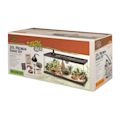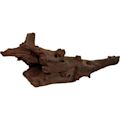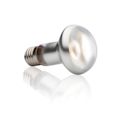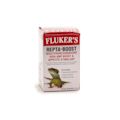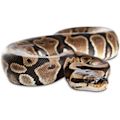Ball Python Shop
Get It Today
Ball Python Supplies
Ball pythons can make excellent pets for reptile fans of all experience levels. Though initially shy—and sometimes intimidating—ball pythons can learn to interact well with pet parents. Some even seem to enjoy being held and handled. Of course, to win your ball python’s trust, you’ll need to ensure they have a secure and well-maintained home. At Petco, we offer many of the ball python accessories you need to create and maintain a great home for your pet.
FAQs About Ball Python Supplies
Ball pythons are relatively easy to care for, but you still need to invest in the right supplies to ensure your python has a supportive home. That typically starts by purchasing a ball python aquarium. Younger pythons do better in smaller environments, and even adult pythons don’t need a vast amount of space. An enclosure that is 36” x 18” x 12” can be a good minimum size for an adult python.
Next, put down substrate in your pet’s habitat. You can find several varieties at Petco. Ball pythons—like all reptiles—can’t regulate their body temperature, so you’ll want to create a warm and cool side of the aquarium. You can use a heating pad or heat lamp to create a warmer side of the tank.
It’s also recommended that you add a big, shallow water bowl to the tank. If the bowl is big enough, your pet may enjoy taking a soak every once in a while. Some of the most important ball python tank accessories are hides. Ball pythons are shy animals and enjoy hides where they can curl up and relax out of view. It’s a good idea to place a hide on both the cool and warm sides of the tank.
It’s also recommended that you add a big, shallow water bowl to the tank. If the bowl is big enough, your pet may enjoy taking a soak every once in a while. Some of the most important ball python tank accessories are hides. Ball pythons are shy animals and enjoy hides where they can curl up and relax out of view. It’s a good idea to place a hide on both the cool and warm sides of the tank.
When it comes to a ball python aquarium setup, these pets aren’t too picky. Make sure you choose an appropriate substrate that doesn’t include sand or cedar materials. Next, add a heating source, which can include options like a heating pad or light. Your snake will also need water for drinking and adding humidity to the tank, which will help manage shedding. A large, shallow dish is typically best. Finally, add hides to both the cool and warm sides of the tank, so your snake has a place to relax when they get stressed. Learn more about reptile health and wellness to help your ball python thrive.
In truth, ball pythons aren’t an overly playful pet. When they feel secure in their habitat, they will explore the area. They can also show curiosity when handled by a pet parent they trust. You don’t need to necessarily put toys in your ball python’s habitat. However, many pet parents enjoy adding unique ball python décor to the tank to create a visually pleasing environment. For example, you can purchase hides that look like rock formations or hollowed-out tree branches. Ball pythons appreciate hides and will certainly use them as a part of their natural behavior. Learn more about reptile habitats and enclosures to discover more options for your pet’s habitat.

